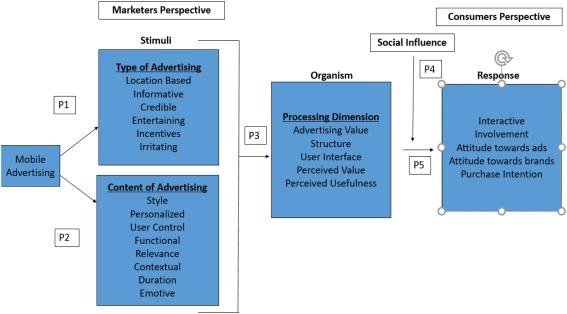Top challenges in Implementing SEL Curricula: Overcoming Barriers to Success in Schools
In today’s fast-paced educational landscape, social-emotional learning (SEL) has taken center stage as schools strive to foster well-rounded, resilient students. Despite its clear benefits,implementing effective SEL curricula can be challenging for educators and school leaders. This complete guide explores the top challenges in implementing SEL curricula, offering practical solutions to help schools overcome barriers to student and school success.
What Is SEL and Why Does It Matter?
Social-emotional learning (SEL) refers to the development of skills that enable individuals to manage emotions, set goals, show empathy for others, establish positive relationships, and make responsible decisions. High-quality SEL programs are associated with increased academic achievement, improved classroom behavior, and better long-term life outcomes.
- Enhanced academic performance
- Reduced emotional distress and behavioral problems
- Improved student engagement and school climate
- Planning for real-world challenges and career success
Top challenges in Implementing SEL Curricula in Schools
While the benefits of social-emotional learning are wide-ranging, bringing SEL curricula into schools is not without its hurdles. Understanding and addressing these implementation barriers is crucial for lasting impact.
1. Lack of Time in the School Day
Challenge: teachers often feel overwhelmed by academic demands, standardized testing schedules, and extracurricular activities. Finding dedicated time for SEL instruction can be tough.
Solution: Integrate SEL principles into daily routines, classroom management, and existing academic content. Schools can also incorporate “morning meetings” or “advisory periods” for focused SEL activities.
2. Insufficient Staff Training and Professional Development
Challenge: Effective SEL instruction requires skilled, confident educators. Many teachers report lacking adequate training to deliver SEL content and model social-emotional skills.
Solution: Invest in ongoing professional learning opportunities focused on SEL, including workshops, coaching, and peer collaboration. Prioritize building the capacity of both teachers and administrators.
3. inconsistent support from Leadership and Stakeholders
Challenge: Successful SEL implementation is often hindered by inconsistent buy-in from school leaders, district administrators, or parents.
Solution: Communicate the data-driven benefits of SEL and align SEL goals with school and district strategic plans. Engage families and community members in meaningful ways, such as informational sessions and open forums.
4. Limited Resources and Funding
Challenge: Budget constraints can impede curriculum adoption, resource allocation, and the hiring of dedicated SEL staff.
Solution: utilize free or low-cost SEL resources and programs. Explore grants, partnerships, and community support to fund SEL efforts. Measure and communicate the overall return on investment (ROI) of SEL initiatives.
5. Cultural Relevance and Equity Concerns
Challenge: One-size-fits-all SEL programs may not address the diverse needs,identities,and experiences of all students. This can lead to disengagement or unintended harm.
Solution: Select SEL curricula that are culturally responsive and adaptable. Involve students, families, and staff from various backgrounds in curriculum development and selection.
6. Measuring and Evaluating SEL Outcomes
Challenge: Unlike academic subjects, SEL skills and outcomes are harder to assess. Schools may struggle with how to track student progress and demonstrate program effectiveness.
Solution: Employ a mix of qualitative and quantitative assessment tools—such as surveys, student self-assessments, and observations. Use data for continuous betterment, not just accountability.
How to Overcome SEL Implementation Barriers: Practical Tips and Strategies
Overcoming the barriers to successful SEL implementation requires strategic planning and a collaborative approach. Here are some actionable strategies to make SEL a enduring part of your school culture:
- Start Small and Scale Up: Begin with pilot programs or grade-level teams.Share successes widely to build enthusiasm.
- Embed SEL Across the Curriculum: Integrate SEL skills into subjects like English,science,history,and even math via project-based learning and group work.
- Create a Supportive Surroundings: Foster a safe,inclusive climate where students feel valued and connected.
- Engage Stakeholders: Regularly communicate SEL goals, progress, and benefits to staff, students, and families.
- Invest in Ongoing Training: Provide regular, high-quality professional development linked to everyday classroom practice.
- Monitor Progress: Use data and feedback to refine your SEL program and celebrate successes.
Case Study: SEL Success in Action
Jefferson Elementary School faced low student engagement and increasing behavioral challenges. The leadership team decided to implement a school-wide SEL curriculum.
- Teachers received specialized SEL training and ongoing coaching.
- Daily class meetings were introduced to reinforce social-emotional skills.
- Families were kept informed through newsletters and workshops on SEL strategies at home.
- Progress was tracked through regular student and teacher surveys.
The result? in two years, office referrals dropped by 40%, classroom participation soared, and both academic performance and student well-being improved dramatically.
Benefits of Overcoming SEL Implementation Challenges
- Higher student achievement and graduation rates
- Better classroom management and reduced disruptions
- Stronger teacher-student relationships
- Increased emotional intelligence and life readiness
- Improved mental health and resilience among students
When schools prioritize SEL and remove barriers to effective curriculum implementation, everyone benefits—students, teachers, families, and the broader community.
Conclusion
Implementing social-emotional learning curricula in schools is an essential step toward cultivating the next generation of empathetic, resilient, and successful citizens. While the challenges in implementing SEL curricula are real, they are not insurmountable.Through intentional planning, ongoing professional development, stakeholder engagement, and a commitment to equity and cultural relevance, schools can successfully overcome barriers and unlock the full benefits of SEL for every student.
Ready to transform your school with SEL? Start small, stay consistent, and celebrate the wins along the way. your students’ futures will thank you.

